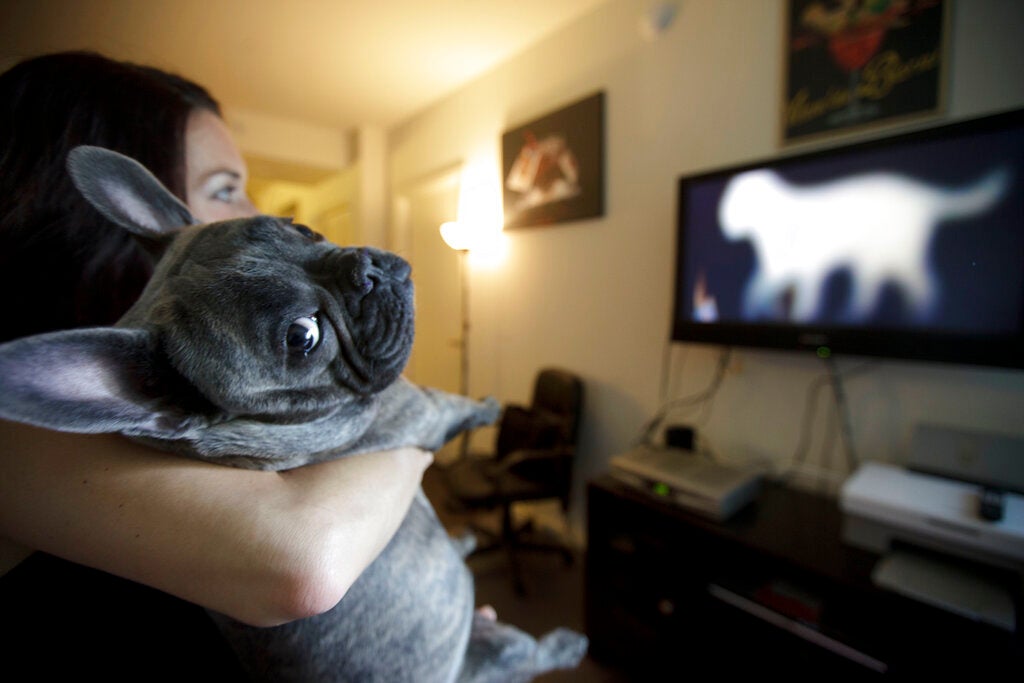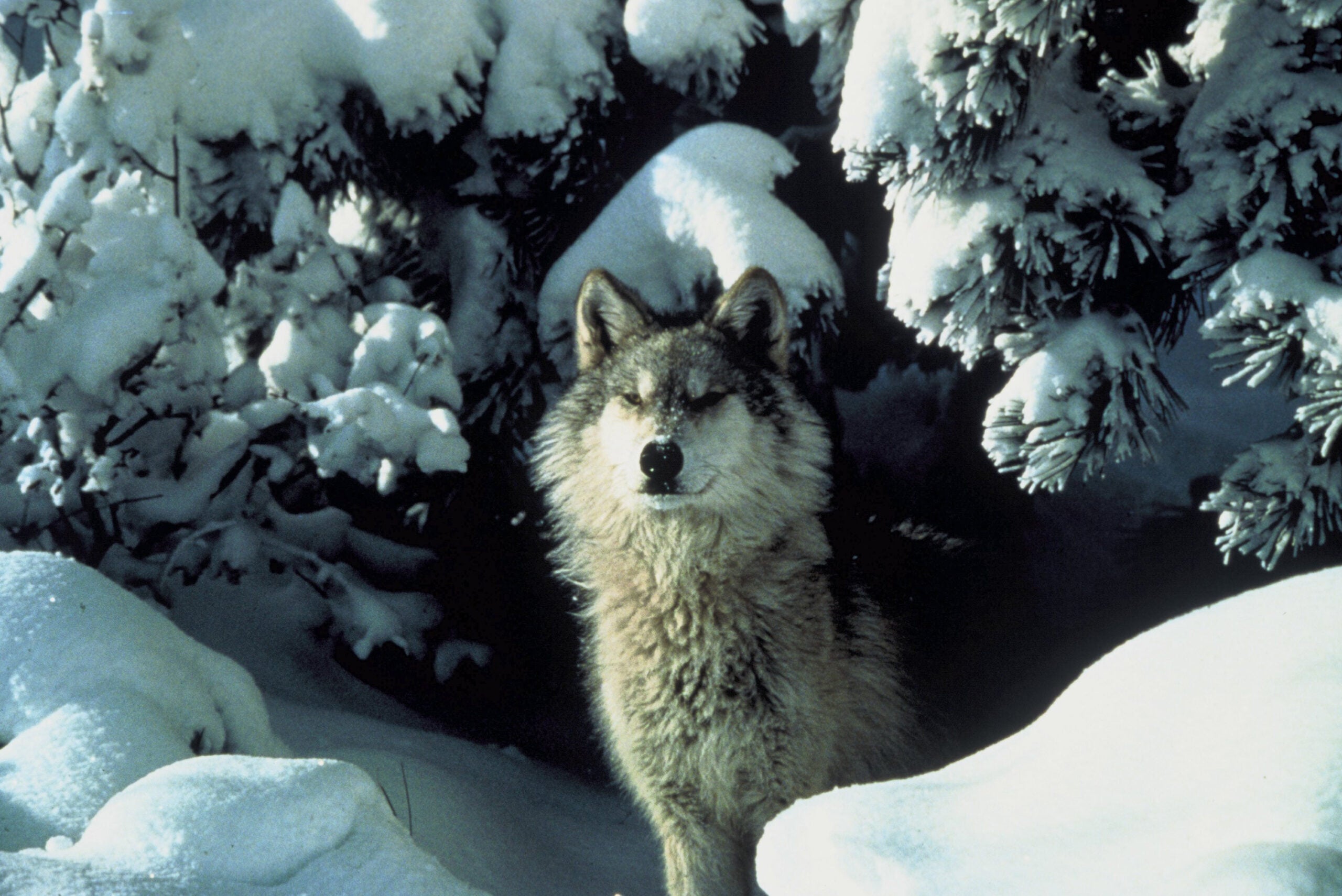A first-of-its-kind study by Wisconsin scientists has tracked what kinds of video content most appeals to dogs.
The not-very-surprising finding: Dogs respond most to onscreen images of dogs.
In addition to that, the newly published survey of more than 1,200 dog owners found that dogs bred for herding or hunting are most likely to be interested in what’s on TV, perhaps because the breeding process selected for eyesight and cooperation. And older dogs are less likely to respond to screens than younger ones, which may be a sign of deteriorating vision.
News with a little more humanity
WPR’s “Wisconsin Today” newsletter keeps you connected to the state you love without feeling overwhelmed. No paywall. No agenda. No corporate filter.
Loss of vision over time is a particular interest for study author Freya Mowat, a veterinary ophthalmologist and professor at the University of Wisconsin-Madison School of Veterinary Medicine. Mowat studies how dogs’ vision declines over time and what factors contribute to it. She said that research may have applications for humans, as well.
“If we are finding risk factors for unhealthy dog aging, we may also find risk factors for unhealthy human aging — because we live with our dogs,” Mowat said.
But in order to make progress on those questions, Mowat first sought to identify what kinds of video entertainment dogs respond to, for potential use in tests of canine vision. Most tests of dogs’ eyesight are either too work-intensive or too imprecise to work well in the lab. For example, one form of test involves leading dogs through a complex maze, which is time-consuming and resource-intensive. Another involves waving a hand close to a dog’s face and observing whether or not it reacts, but that is essentially a binary test of whether the dog is blind or not.
If researchers could establish baseline expectations about what videos normally get dogs to react, Mowat said, that could help them design tests that could better capture changes in dogs’ eyesight over time.
The new study in the January 2024 issue of Applied Animal Behaviour Science compiles the results of a survey Mowat launched in 2022. She said the finding that young dogs were more likely to watch than older dogs is one step toward that understanding.
“It does suggest there is a visual behavior change in older and less visually competent dogs,” she said.
The survey found that 68 percent of respondents’ dogs interacted with an active screen at least once a day. Eighty-nine percent said their dogs were most interested in “animal” content, especially dogs on screen. Twenty-six percent said their dogs enjoyed watching “ball sports”; 17 percent said vehicles; 16 percent said non-ball sports; and 33 percent said “other” content, which includes animation.
And the survey found one subject that was not particularly interesting to dogs was humans. Shows featuring people ranked ninth among animal content.
Dogs don’t watch TV the way humans do
The published study notes that “in recent years, a variety of video content has been marketed with the explicit stated purpose of dog entertainment.”
But the actual research behind claims made by these services is often thin, or even nonexistent. The study found that most dogs paid attention to screens for between one and five minutes and “very few dogs paid attention for more than 20 minutes,” according to the study.
Mowat highlighted one finding in the survey, which is that TV-watching for dogs is often associated with physical reactions: They bark, they approach the screen, they track movements and look behind or around the TV for evidence of whatever they’re seeing.
In other words, TV is not necessarily relaxing for a dog in the way it might be for that dog’s owner.
“They’re not just passively sitting,” Mowat said. “Their excitement and active response were much more common than the laying on the couch, Netflix-watching reaction that we typically have.”
Wisconsin Public Radio, © Copyright 2026, Board of Regents of the University of Wisconsin System and Wisconsin Educational Communications Board.





